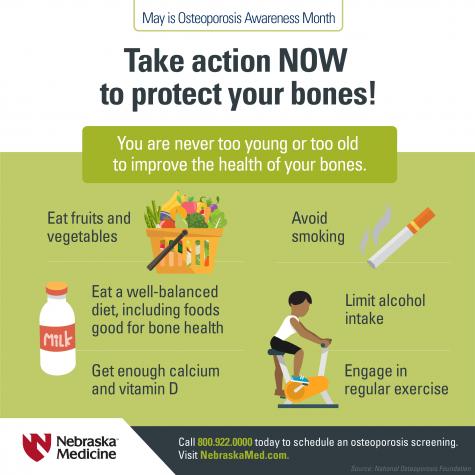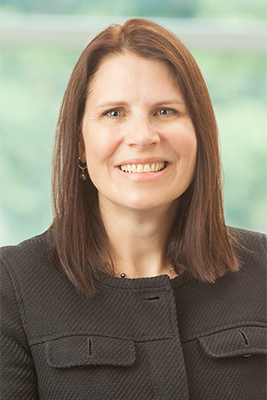Good bone health starts as a child


When most people think of osteoporosis, they think of a disease that afflicts elderly women. While this is true, there’s more to it. It is estimated that 70 percent of people by age 80 will have osteoporosis. According to the National Osteoporosis Foundation, about one in two women and up to one in four men, age 50 and older in the U.S. will break a bone due to osteoporosis.
Osteoporosis is often called the brittle bone disease. It causes the bones to become weak and brittle with age. When you see an elderly woman or man with a hunched back, it is often due to osteoporosis caused by a fractured or collapsed vertebra. People with osteoporosis are more susceptible to bone fractures throughout their body, especially in the hips, wrists and spine. The problem is, most people don’t know they have osteoporosis until they break a bone.
Despite the fact that osteoporosis typically presents itself later in life, health care providers often call it a “pediatric disease.” That’s because osteoporosis prevention actually begins as a child. Adequate calcium intake during your childhood years through young adulthood, are the bone building years and are critical to help reduce your risk for osteoporosis later in life. By about age 25, most people have reached their peak bone mass, which is the greatest amount of bone you can attain. The higher your peak bone mass, the less likely you are to develop osteoporosis later in life. This bone mass is typically maintained until you start getting older. For women, bone mass starts to decline during perimenopause when estrogen production decreases, which promotes the body’s maintenance of bone. After menopause, most women will have lost about 10 percent of their bone mass. While men lose bone mass more gradually, their bone health also declines as they age, increasing their risk for fractures.

Prevent Bone Fractures! Get Screened for Osteoporosis
As I mentioned earlier, eating a diet rich in calcium and vitamin D starting as a young child is one of the best ways to develop strong bones. The body absorbs calcium most efficiently through the foods you eat. In general, children and adults should strive for about 1,000 mg of calcium daily. After age 50, you should increase calcium intake to 1,200 mg daily. In years past, many people met that requirement by drinking milk. Unfortunately, with so many beverage choices available today, drinking milk regularly at meals is no longer the option it used to be.
If milk is not a stable part of your diet, you should make a concerted effort to add other calcium-rich foods to yours and your family’s diet. Calcium-rich foods include dairy products like yogurt and cheese, seafoods such as sardines, salmon and shrimp, vegetables such as kale, broccoli and spinach, and almonds. If you still are not able to get enough calcium in your diet, consider calcium supplements to make up the difference. Calcium carbonate, calcium citrate and calcium phosphate are the most popular forms of supplements and provide the best absorption. Vitamin D is also needed to improve calcium absorption. Maintaining a stable level of calcium in your diet, especially as you get older, is important. If you do not consume enough calcium for your body’s needs over a three-day period, your body will start pulling calcium from your bones.

Regular exercise is also key to strengthening your bones and muscles. Weight-bearing aerobic activities like walking, running, aerobics or dancing help build bone strength and slow bone loss. Strength training, such as the use of free weights and resistance bands, will also help with bone density maintenance, as well as build muscle strength to provide good posture, stability and balance to prevent falls.
There are a number of factors that put you at greater risk for developing osteoporosis. In addition to a diet low in calcium and vitamin D, other risk factors include family history, being of white or Asian descent, having a small frame, body weight under 127 pounds, smoking, early menopause before age 45, sedentary lifestyle, excessive alcohol intake and long-term use of oral or injected corticosteroid medications, such as prednisone and cortisone.
A bone density test, which measures the density of your bones, can determine if you have osteoporosis. This test is normally recommended for women at age 65 and for men at age 70. However, if you have any of the risk factors mentioned above, I typically recommend a bone density test at around age 50. Knowing that you have osteoporosis at age 50 rather than 65, can help you put some preventative measures in place to slow further bone loss. Depending on the density of your bones and your other risk factors, I may recommend an osteoporosis medication, which can help build, strengthen or maintain bone mass. Studies show that use of these drugs can reduce the risk of fractures by 50 percent. This is significant because osteoporosis is responsible for 2 million broken bones every year in the U.S. and causes 75,000 deaths. I often seen patients with their second or third fracture – fractures that needlessly occurred because osteoporosis wasn’t diagnosed or treated.
We recently opened an osteoporosis clinic for patients with bone health problems inside our Orthopaedics clinic at Lauritzen Outpatient Center. Our goal is to educate our patients about osteoporosis and help prevent another fracture.
If you’re not sure where you stand in terms of osteoporosis, talk to your doctor at your next visit. He or she can help you determine your risk factors, review important preventive measures and decide whether you should consider having a bone density test.




